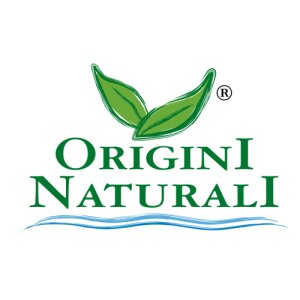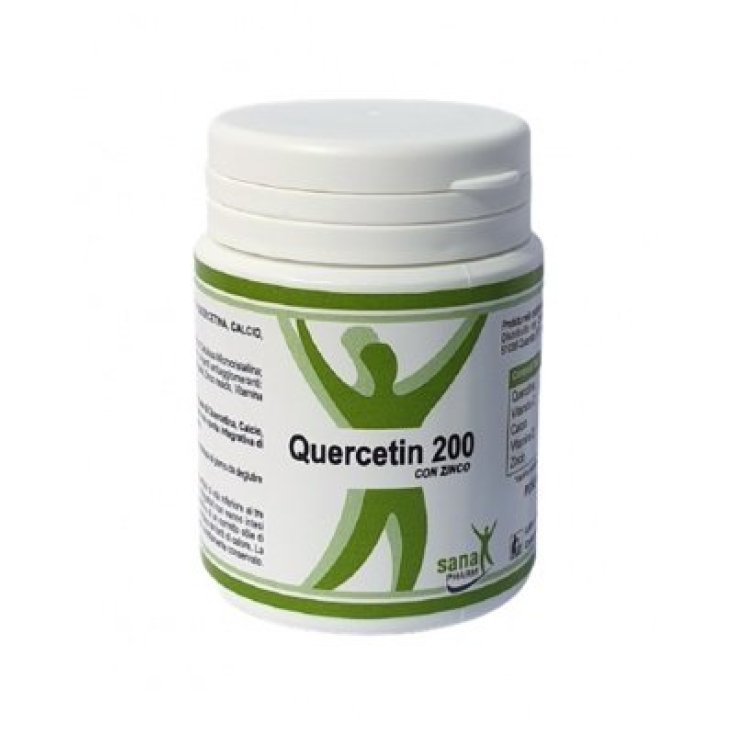Quercetin 200 Sana 60 Tablets

- Brand: ORIGINI NATURALI Srl
- Product Code: 981067224
- EAN: 8052286800272
- Availability: In 10 - 14 Days
- Purchase 3 items for 31.38€ each
- Purchase 4 items for 30.74€ each
- Purchase 5 items for 30.10€ each
Quercetin 200 Sana - Food Supplement
Quercetin 200 mg (Quercetin) + Zinc Strong antioxidant action.
Quercetin, a naturally occurring molecule, inhibits Sars-CoV-2. An international study in which Cnr also participated
The research found that quercetin acts as a specific inhibitor for the virus responsible for Covid-19, showing a destabilizing effect on 3CLpro, one of the key proteins for virus replication. The study is published in the International journal of biological macromolecules.
Natural sources of quercetin and composition of the substance.
Quercetin is a flavonolic aglycone belonging to the class of bioflavonoids, widely distributed in the plant kingdom: onions, red wine, green tea and St. John's wort are particularly rich sources.
Quercetin is often present in the form of glycoside, that is, combined with molecules of a sugary nature: for example, rutin is a quercetin-3-rutinoside and in the onion there are glycosides of quercetin with isoramnose. Quercetin is a greenish-yellow compound, practically insoluble in water, while the glycosidic derivatives are much more water-soluble. About 25% of the ingested dose is absorbed in the small intestine, hence the quercetin passes through the portal circulation in the liver which then distributes it to the different tissues of the body. The blood peak is reached within 0.7-7 hours after ingestion. Quercetin bound in the glycosidic form, on the other hand, is absorbed in the colon only after the intestinal bacteria have hydrolyzed these glycosides.
The quercetin used is extracted from the buds of Sophora japonica L., fam. Favaceae (Leguminosae), elegant tree native to the Far East.
Presumed properties
1) ROLE IN ALLERGIES and IN INFLAMMATORY PROCESSES: this action would be linked to the presence of the hydroxyl groups present in quercetin. The mechanism of action appears to be related to its ability to inhibit the degranulation of mast cells, basophils and neutrophils. This may suggest its use in the physiological treatment of allergies, such as hay fever.
Quercetin could also inhibit the release of histamine and other mediators of allergic reactions, acting as a stabilizer of cell membranes, which thus become less sensitive to allergens. Quercetin, like other bioflavonoids, according to some researchers is able to act directly on the cascade system of inflammatory mediators, prostaglandin-cyclooxygenase and lipooxygenase, without however showing the classic gastric side effects associated with the administration of anti-inflammatory drugs. Non-steroidal (indeed possibly favoring the cessation of bleeding and subsequent scarring).
2) IMMUNOMODULATING EFFECT: some studies suggest other immunomodulating effects and, in combination with vitamin C, also antivirals reported in the literature, however there is no unanimous confirmation and therefore their use requires further investigation.
3) ANTIOXIDANT ACTION: quercetin inhibits the peroxidation of lipids. This action is due to its particular structure, rich in double bonds. The antiradical action is able to protect cellular structures at all levels, in particular as regards the mechanisms of protein production. Quercetin synergizes the antioxidant activity of vitamin C: this synergy is manifested in particular through an improved action of glutathione in cellular metabolism. The gastroprotective and anti-ulcer effect recognized by quercetin is also due, at least in part, to this antioxidant action.
4) EFFECT ON ALDOSOREDUCTASE: it is known that hyperglycemia is correlated in the long run with disturbances affecting the lens (lens opacification-cataract), kidneys, retina and nerves. These disorders are related to the transformation of excess blood glucose into compounds of advanced glycosylation, capable of damaging specific tissues of the body. Quercetin has been shown to inhibit aldosoreductase, which is the first enzyme involved in the metabolism of polyols (sugars such as sorbitol) capable of causing such damage, in particular opacification of the lens.
Toxicological studies
Toxicological research confirms that supplementation with Quercetin up to 200 mg per day is safe.
Warnings
Do not use during pregnancy and lactation.
Average contents For 1 tablet% VNR
Quercetin 200 mg
Vitamin C 50 mg 62%
Calcium 146 mg 18%
Vitamin D 2.5 mcg 50%
Zinc 15 mg 150%
How to use
1 tablet per day.
Format
Pill box of 60 tablets.

